
Barcelona is home to many architectural marvels, but none capture the imagination quite like the Sagrada Familia. This iconic basilica, designed by the brilliant Antoni Gaudí, is a testament to the city's rich artistic heritage and a must-visit for travelers from around the globe.
In this article, we present Sagrada Familia in Barcelona: Your Ultimate Guide to this Architectural Wonder. From its intricate facades to the breathtaking interiors, you'll discover everything you need to know to fully appreciate this UNESCO World Heritage site and its ongoing story of construction and beauty.
Sagrada Familia: A Masterpiece of Modernist Architecture in Barcelona
The Sagrada Familia stands as a prime example of Modernist architecture, seamlessly blending nature with spirituality. Gaudí's unique vision is evident in every detail, from the organic shapes to the symbolic representations found throughout the basilica. The design incorporates elements that reflect his deep understanding of geometry and light, creating a space that is both awe-inspiring and introspective.
Visitors to the Sagrada Familia can expect to see a remarkable fusion of art and engineering. The basilica features:
- Intricate Facades: Each side tells a different biblical story.
- Stained Glass Windows: A vivid play of colors that enhances the spiritual experience.
- Towers: Designed to symbolize the twelve apostles, these soaring structures define the skyline of Barcelona.
Moreover, the ongoing construction of the Sagrada Familia reflects Gaudí's belief that architecture is a living entity. This masterpiece is continually evolving, with new techniques and materials being incorporated while remaining faithful to Gaudí's original designs. The completed structure is expected to include 18 towers, each representing significant biblical figures, culminating in a majestic centerpiece that honors the Holy Trinity.
As you explore this architectural wonder, it is essential to appreciate how the Sagrada Familia not only represents a milestone in the history of Modernist architecture but also stands as a symbol of Barcelona’s identity. With its unique blend of art, culture, and spirituality, the basilica invites visitors to ponder the intersection of humanity and the divine, offering a transformative experience that is not to be missed.
Exploring the Symbolism Behind the Sagrada Familia's Unique Design
The unique design of the Sagrada Familia is steeped in profound symbolism that reflects both Christian beliefs and Gaudí's admiration for nature. Each element of the basilica is intentional, aiming to convey a deeper meaning. For instance, the three grand facades—Nativity, Passion, and Glory—represent different phases of Christ’s life, inviting visitors to reflect on the themes of birth, sacrifice, and resurrection.
Gaudí's use of natural forms is particularly striking, as he believed that nature was a manifestation of God's creation. The columns resembling trees in the nave not only provide structural support but also create a serene forest-like atmosphere, immersing visitors in a divine experience. This design choice reinforces the connection between the natural world and spirituality, illustrating how architecture can serve as a bridge to the divine.
Additionally, the intricate stained glass windows play a crucial role in the basilica's symbolism. As sunlight filters through these colorful panes, it creates a dynamic interplay of light and color, mirroring the idea of divine light illuminating the soul. This sensory experience enhances the spiritual ambiance, making each visit to the Sagrada Familia unique.
The towers of the Sagrada Familia further amplify its symbolic significance. Each of the 18 towers represents a biblical figure, including the Virgin Mary and the apostles. As these towering structures reach toward the heavens, they symbolize man's aspiration toward the divine, embodying Gaudí's vision of a church that is not only a place of worship but also a testament to faith and hope.
A Comprehensive Guide to Visiting Sagrada Familia: Tips and Best Times
When planning your visit to the Sagrada Familia, timing is crucial to fully appreciate this architectural wonder. To avoid the largest crowds, aim for early morning or late afternoon visits on weekdays. Additionally, consider visiting during the off-peak months of January or February for a more serene experience.
Purchasing tickets in advance is highly recommended to skip the long queues. You can choose from various ticket options, including guided tours that provide deeper insights into Gaudí's vision. Here are some options to consider:
- Basic Entry Ticket: Access to the basilica.
- Guided Tour: A knowledgeable guide takes you through the history and design.
- Audio Guide: Learn at your own pace with a multimedia guide.
To enhance your visit, check the basilica's official website for hours of operation and any special events. The following table summarizes the best times to visit:
| Day | Best Time to Visit | Notes |
|---|---|---|
| Monday to Friday | 8 AM - 10 AM | Least crowded, ideal for photography. |
| Saturday and Sunday | After 5 PM | Great for evening light, but busier. |
| January - February | Anytime | Lower visitor numbers overall. |
Lastly, don't forget to take a moment to appreciate the basilica's surroundings, including the beautifully landscaped gardens and the nearby park. This holistic experience will enrich your understanding of the Sagrada Familia and its place within Barcelona's vibrant cultural landscape.
The Genius of Antoni Gaudí: His Vision for the Sagrada Familia
Antoni Gaudí's vision for the Sagrada Familia transcends traditional architectural boundaries, embodying a seamless integration of art, nature, and spirituality. His approach was driven by a profound belief that architecture should reflect the divine, resulting in a design that is both innovative and deeply symbolic. Gaudí meticulously studied natural forms, using them as inspiration to create structures that mimic the organic beauty of the world around us.
One of Gaudí's most significant contributions to the Sagrada Familia is his use of hyperbolic paraboloids and other complex geometrical shapes. These elements not only enhance the aesthetic appeal but also serve practical purposes, such as improving structural integrity. His groundbreaking techniques included the use of catenary arches to distribute weight evenly, allowing for an ambitious verticality that challenges conventional design norms.
Furthermore, Gaudí's incorporation of light into the design is another testament to his genius. The basilica's strategic placement of windows allows natural light to flood the interior, creating a dynamic interplay of colors throughout the day. This illumination is intended to evoke a sense of divine presence, inviting visitors to experience a connection to something greater than themselves. Key features in this light play include:
- Stained Glass: Each pane is crafted to tell stories and enhance the spiritual atmosphere.
- Vaulted Ceilings: Designed to draw the eyes upward, encouraging reflection and reverence.
- Natural Light: Through careful design, Gaudí ensured that sunlight transforms the space as the day progresses.
Ultimately, the Sagrada Familia is not merely a building; it is a living testament to Gaudí's faith and vision. His relentless pursuit of perfection and innovation sets the basilica apart as a unique symbol of Barcelona’s cultural identity. As construction continues, each new element added remains true to Gaudí’s original dream, ensuring that this architectural wonder will inspire generations to come.
Unraveling the Construction Timeline of the Sagrada Familia
The construction of the Sagrada Familia began in 1882 under architect Francisco de Paula del Villar, who initially envisioned a traditional neo-Gothic church. However, the design direction changed dramatically when Antoni Gaudí took over the project in 1883. Gaudí devoted the last 43 years of his life to this monumental work, bringing his innovative style and vision to the basilica, which has since become a symbol of Barcelona.
Over the decades, the construction has faced numerous challenges, including funding issues, the Spanish Civil War, and the intricate nature of Gaudí's designs. The original plans were destroyed during the war, necessitating a painstaking reconstruction of Gaudí's vision based on sketches and models. Despite these setbacks, progress has continued, with various sections completed over the years, including the Nativity façade, which reflects Gaudí’s early work, and the Passion façade, completed in the 1970s.
As of 2023, the Sagrada Familia is reported to be around 70% complete, with an expected completion date set for 2026, coinciding with the 100th anniversary of Gaudí's death. The ongoing work emphasizes modern construction techniques while striving to remain faithful to Gaudí's original vision. Key milestones in the construction timeline include:
- 1882: Groundbreaking and initial design by Villar.
- 1883: Gaudí becomes chief architect.
- 1936: Construction halted due to the Spanish Civil War.
- 1976: Completion of the Passion façade.
- 2026: Expected completion of the basilica.
The evolution of the Sagrada Familia is not just a story of architecture but a journey through history, capturing the spirit of innovation and resilience in the face of adversity. Visitors can witness the fusion of traditional and modern techniques as the basilica gradually transforms into Gaudí's grand vision, making it an essential part of Barcelona's architectural landscape.
Photography Tips for Capturing the Beauty of Sagrada Familia in Barcelona
When it comes to capturing the beauty of the Sagrada Familia, timing is everything. The best light for photography occurs during the golden hours—shortly after sunrise and just before sunset—when the soft sunlight enhances the intricate details of Gaudí's masterpiece. Furthermore, consider visiting during the quieter times of the week to avoid large crowds, allowing for unobstructed shots of this architectural wonder.
To truly showcase the magnificence of the Sagrada Familia, you might want to experiment with various angles and perspectives. Try the following techniques:
- Wide-Angle Shots: Capture the entire facade to emphasize its grandeur.
- Close-Ups: Focus on intricate details like the sculptures and stained glass.
- Symmetry: Frame your shots to highlight the basilica's balance and harmony.
Don't forget to utilize the surrounding areas for unique compositions. The park adjacent to the Sagrada Familia offers stunning views and a chance to capture it against the backdrop of Barcelona's skyline. Be mindful of your settings; using a tripod can greatly enhance the clarity of your images, especially in low-light conditions inside the basilica.
Lastly, consider the interior lighting as a vital element in your photography. The colorful stained glass windows produce a beautiful kaleidoscope of light that changes throughout the day, creating a dynamic atmosphere within the basilica. Experimenting with different exposures can help you capture the ethereal quality of the light, making your photographs even more striking.
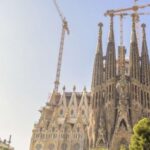 Experience the Marvel of Sagrada Familia with Barcelona Tickets
Experience the Marvel of Sagrada Familia with Barcelona Tickets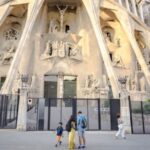 Sagrada Familia Barcelona: Unveiling the Dress Code Secrets
Sagrada Familia Barcelona: Unveiling the Dress Code Secrets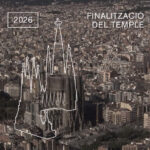 Unveiled Beauty: Sagrada Familia Barcelona Finished Date Revealed
Unveiled Beauty: Sagrada Familia Barcelona Finished Date RevealedIf you want to know other articles similar to Sagrada Familia in Barcelona: Your Ultimate Guide to this Architectural Wonder you can visit the category WHERE YOU CAN GO.
Leave a Reply


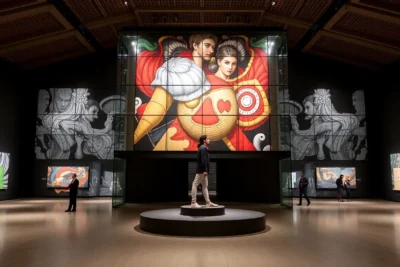
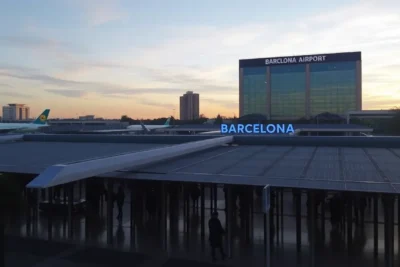

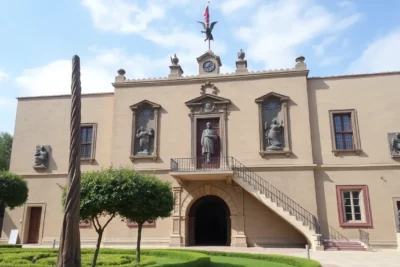
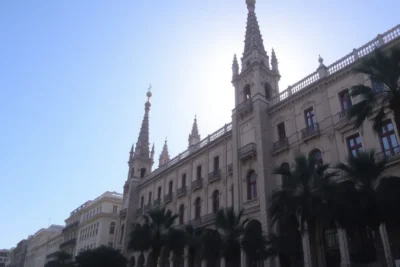
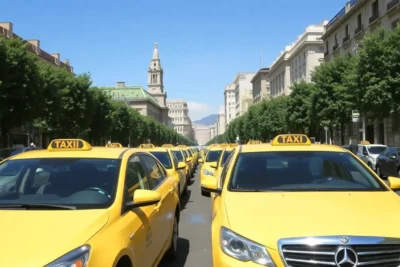
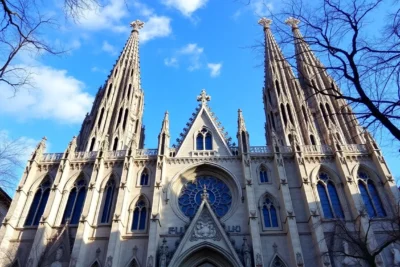
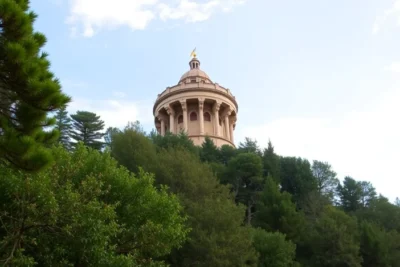
Read more!